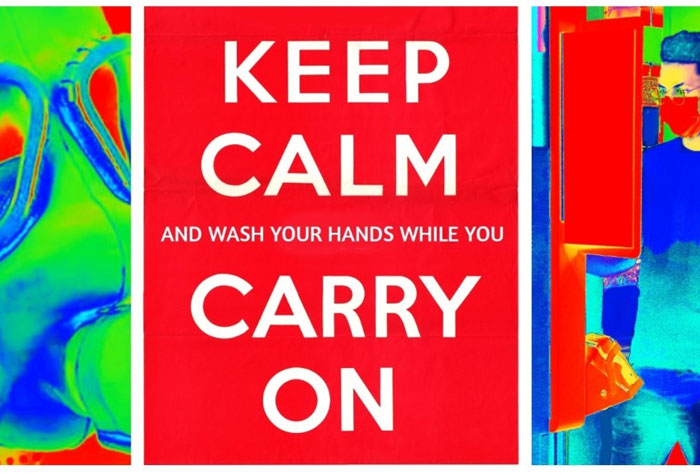As more information on the Novel coronavirus comes in, it’s becoming clear that it’s less serious that SARS but spreads more easily in a similar way to seasonal colds or flu, and in what must be a bitter disappointment to the copy-writers of the popular press it looks like the human race is going to survive. It’s also likely it will be in every country by spring, so it will be a long-term business risk we all need to manage.
Some good news is that there’s a team at WHO working on a better name for 2019-nCov. The International Committee on Taxonomy of Viruses are working on a name that will not stigmatize a particular country or a species of animal, so my favorite – BatmanFlu may be out, but I’ve proposed Bruce Wayne Flu to the WHO – remember you heard it here first!
Novel coronavirus – leadership, culture and customers:
It’s also worth mentioning that this is not the first human novel coronavirus outbreak. In the 1960’s we had HCoV-229E (named as Elvis Flu) followed by HCoV-OC43 (Sonny & Cher Flu) then in Hong Kong we had HCoV-HKUL (Bruce Lee Flu) – these all caused symptoms similar to the common cold unless the sufferer was elderly or infirmed (sounds familiar), but then we had SARS CoV in 2002 which made people take new coronavirus outbreaks much more seriously, although now 2019-nCoV (Bruce Wayne Flu) seems to have fallen back into the pattern of the earlier outbreaks.
But the big difference in 2020 is that we now have Social Media – so rather than the relaxed response of the Beat Generation we have the escalating hysteria of the Fake News Generation. (For anyone Googling #sony&cherflu – I may have made up some of the names of the earlier virus outbreaks).
By now we all have a clear idea of the health measures we need to implement in our operations, and I’ve seen many examples of sensible precautions being put in place, including personal hygiene posters, hand sanitizers, face masks, regular sanitizing routines, mobile phone wipes and even some ambitious attempts at temperature checks for staff. Shortages of masks is a challenge in some countries, especially for those calm businesses who resisted the temptation to panic buy and hoard (that’ll teach you next time!), but generally the required public health measures seem to be well understood. But my experience of the 02/03 SARS outbreak was that it was the ‘perception of risk’ rather than the actual risk to health that caused people to change their dining and shopping habits.
In 2020 the perception of the risk from 2019-nCoV has been magnified by a combination of the impressive response by the Chinese Government plus the alarmist news reports we all see on-line, together with a dash of opportunistic Trade War bitch-slapping. So I fear the economic impacts will be massive.
My previous article covered when to wear masks, but I think we also need to look at another major factor – leadership.
All our people are being bombarded with stories about the new outbreak – and the dynamics of social media are much like the ‘R0’ virulence rates of new viruses – the more compelling the story, the more it is shared, the more it spreads. Truth is just not a factor. So we need to balance the impact of this tide of miss-information with calm leadership and clear communications.
I heard of a couple of cases where businesses were planning to close their head offices so everyone could work from home. I suggested that this may not be the best approach, as we expect our people to head to the stores and restaurants every day and serve our customers – so being bunkered well behind the trenches and sending orders to the troops on the front line may not have the right impact. Instead I think we need to do the opposite. As people managers we should head to the stores, put our masks on properly, wash hands, sanitize phone screens and meet the troops. Ask how they are feeling, check they have what they need, reassure them with balanced facts from trusted sources.
We also need to monitor first-hand the implementation of our extra public health measures in the stores and gain valuable feedback. Early adopters of the masks for example, have found issues with comfort when they are worn all day – and the molded cup-shaped masks seem to be better for long term wear. A choice of mask designs may also be needed for different shaped faces.
We can also look at the precautions from a customer’s perspective. Businesses who can reassure their customers will suffer the least economic impact. Review if your new measures are visible to your customers. Can you implement measures in a way that’s in line with your corporate culture – perhaps have your hygiene teams wearing branded polo shirts and have branded masks with staff names on – so people will want to wear them? (And think of the brand coverage from selfies) Consider a central mask replacement service that includes a leaflet about proper fitting plus a reminder to wash hands after touching your mask. Can your touch screens have a pop-up reminder to sanitize? In addition to responding to the immediate concerns, we also need to be thinking longer term.
This is going to be an ultra-marathon and not a sprint, and although our primary concern is staff and customer health, if we can support the new safety measures with leadership and style it may help to minimize the business impacts while we all figure out how to operate in a post 2019-nCoV world.

